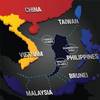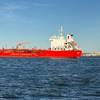The International Tanker Owners Pollution Federation (ITOPF), which maintains a database of oil spills from tank vessels, recorded two large spills (>700 tonnes) and four medium spills (7-700 tonnes) for 2017.
The first large spill occurred in June when a tanker sank in the Indian Ocean with over 5000 tonnes of oil on board. The second incident involved a tanker which sank off the coast of Greece in September spilling about 700 tonnes of oil.
Of the four medium sized spills two were recorded in January 2017 in South Asia and Southeast Asia; both resulted from collisions and involved the release of bunker fuel. A third spill was reported in East Asia in August. This also involved bunker fuel and resulted from a vessel grounding in bad weather. The fourth medium-sized spill occurred in October in the USA.
The total volume of oil lost to the environment recorded in 2017 was approximately 7,000 tonnes, the majority of which can be attributed to the large spill (>700 tonnes) that occurred in the Indian Ocean in June.
Over the last 48 years, statistics for spills greater than 7 tonnes from tankers show a marked downward trend as illustrated below.
The number of large spills (>700 tonnes) has decreased significantly over the last few decades and since 2010 averages 1.8 per year.
When looking at the frequency and quantities of oil spilt, it should be noted that a few very large spills are responsible for a high percentage of the oil spilt.
In the period 1970 to 2017, 50% of large spills occurred while the vessels were underway in open water; allisions, collisions and groundings accounted for 59% of the causes of these spills. Perhaps unsurprisingly, these same causes account for an even higher percentage of incidents when the vessel was underway in inland or restricted waters, being linked to some 99% of spills.






